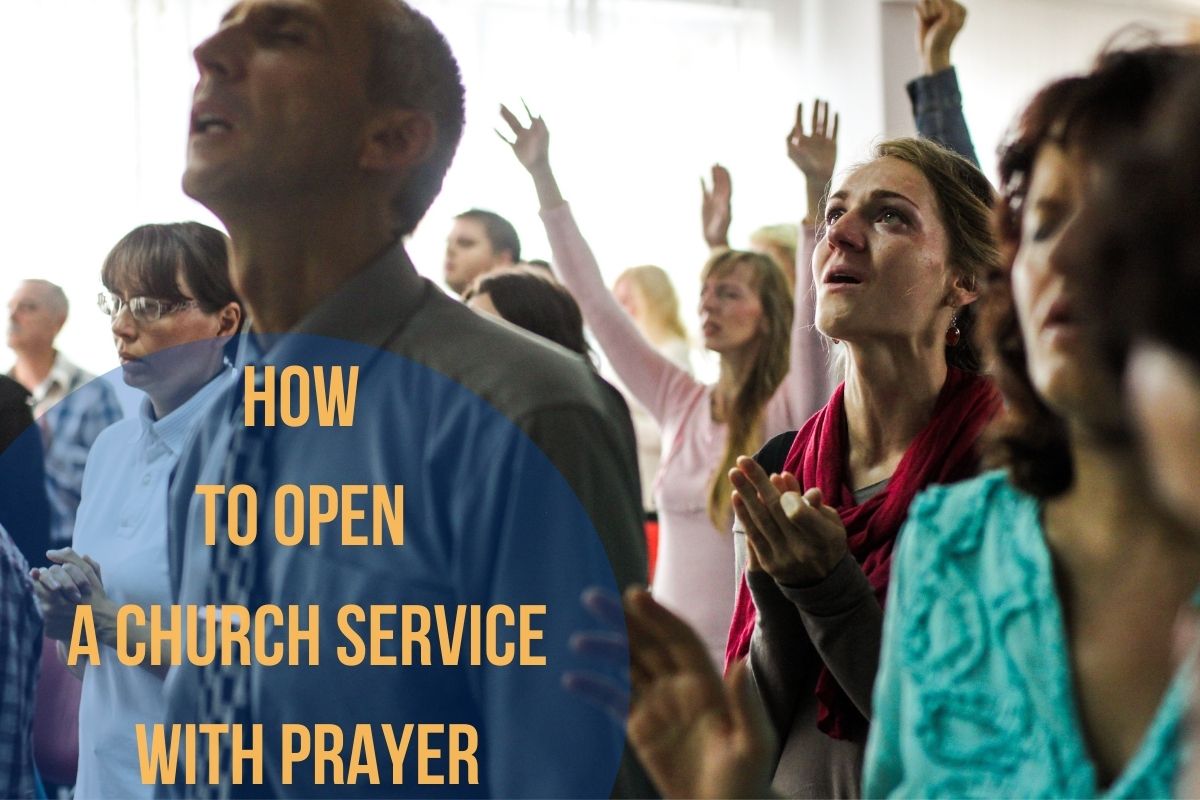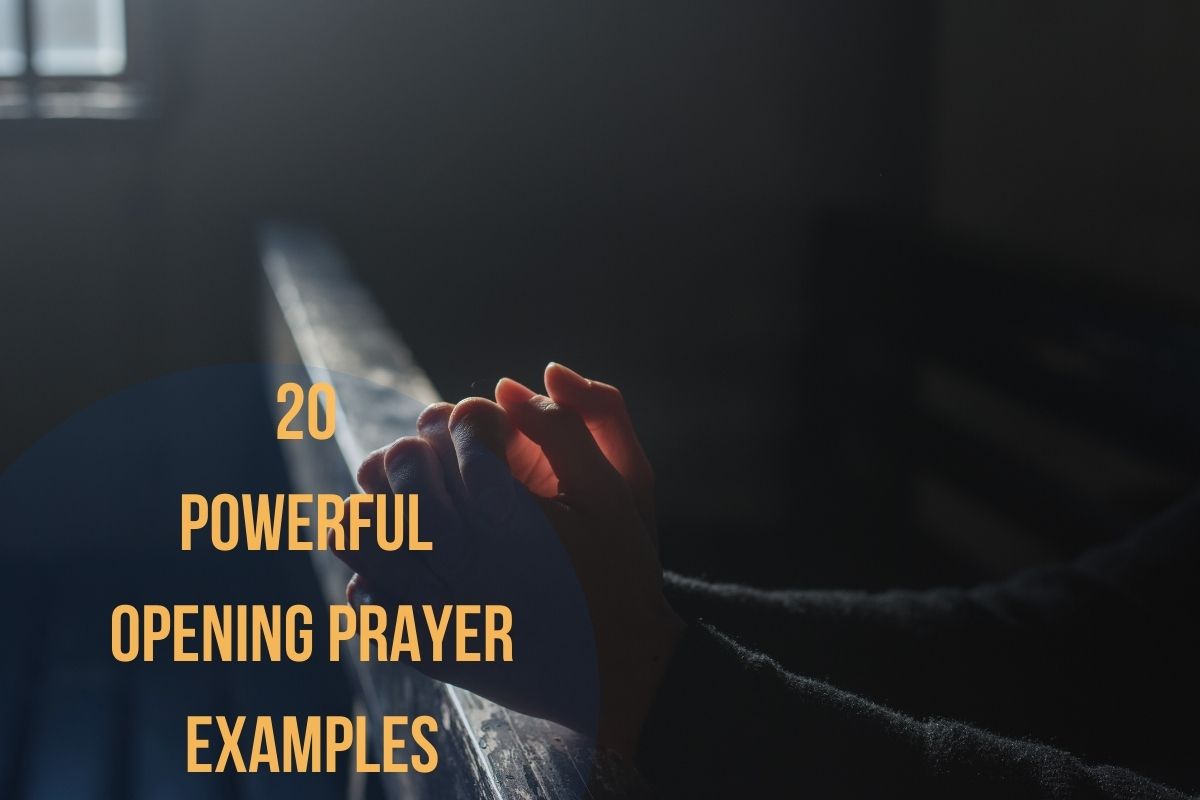In every church service, the opening prayer holds significant importance as it sets the tone for the entire worship experience.
It serves as a way to connect with God, seek His guidance, and invite His presence into the gathering.
This article will guide How To Open A Church Service With Prayer, ensuring a meaningful and engaging experience for the congregation.
Opening a church service with a prayer is a common and meaningful way to begin a worship gathering. Here are some steps and tips on how to open a church service with prayer:
1. How To Open A Church Service With Prayer
Prepare in Advance
Spend some time in prayer and reflection before the service to ensure your words are guided by the Holy Spirit.
Decide if you want to use a pre-written prayer or if you will offer a spontaneous, heartfelt prayer.
Choose a Suitable Location
Stand at a prominent spot within the church, such as the pulpit or a designated prayer area, where you can be easily seen and heard by the congregation.
Begin with a Greeting
Start with a warm and welcoming greeting to set a positive tone for the service, acknowledging the presence of the congregation.
Use Scripture
You can open with a Bible verse that relates to the theme or purpose of the service. This can help set the context for your prayer.
Adoration and Praise
Begin your prayer by praising God. Acknowledge His greatness, holiness, and sovereignty. Express your love and gratitude for who He is.
Confession
Acknowledge the sins and shortcomings of individuals and the church as a whole. Confession is an important part of corporate worship, as it allows for repentance and cleansing.
Thanksgiving
Express gratitude to God for His blessings, provision, and the opportunity to gather for worship. Thank Him for His grace and love.
Supplication and Intercession
Pray for the needs of the congregation, the community, and the world. Mention specific prayer requests, both personal and collective.
Pray for the church leadership, for unity and peace within the congregation, and for the spread of the Gospel.
Petitions
Ask God to guide the service, open hearts, and speak through the sermon, music, and other elements of the service.
Conclusion
Close the prayer with a final word of praise and commitment to serving God, ending with “Amen,” which means “so be it.”
Maintain a Reverent Posture
Keep a reverent and focused posture during the prayer, with eyes closed and hands folded, if that’s your custom. Encourage the congregation to do the same.
Engage the Congregation
As the leader, you can invite the congregation to join in prayer with a phrase like, “Let us bow our heads and hearts in prayer.”
Keep It Concise
While it’s important to cover various aspects of prayer, try to keep the opening prayer relatively concise, as it’s just the beginning of the service.
Speak Clearly and Slowly
Ensure that your words are clear, and that you speak at a pace that allows the congregation to follow and engage in the prayer.
End with Confidence
Conclude your prayer with confidence, knowing that you have entrusted the service and the congregation to God’s care.
Opening a church service with prayer sets a spiritual tone and invites the presence of God into the worship gathering. It’s a moment to connect with the congregation and lead them in a collective act of worship and supplication.
2. Importance of Opening a Church Service with Prayer
Prayer is a fundamental aspect of Christian worship, and opening a church service with prayer holds immense significance. It allows the congregation to collectively approach God, express gratitude, seek forgiveness, and present their needs and concerns. Opening with prayer helps create an atmosphere of reverence, unity, and spiritual focus.
3. Understanding the Purpose of Prayer
Before opening a church service with prayer, it is essential to understand the purpose behind it. Prayer is a means of communication with God, a way to express our love, gratitude, and dependence on Him. It is an opportunity to seek His guidance, wisdom, and strength. By opening the service with prayer, we acknowledge God’s presence and invite Him to lead and bless the gathering.
4. Preparing for the Opening Prayer
Proper preparation is crucial for a meaningful opening prayer. Consider the following steps:
5. Selecting the Prayer Leader
Choose a prayer leader who is spiritually mature, comfortable praying in public, and has a good understanding of the service’s theme or focus. The prayer leader should be able to lead the congregation in a heartfelt and sincere prayer.
6. Choosing the Right Prayer
Select a prayer that aligns with the purpose and theme of the service. It should be relevant, inspiring, and inclusive, addressing the needs and concerns of the congregation. Consider using a combination of prepared prayers and spontaneous prayers from the heart.
7. Setting the Tone for the Prayer
Creating a welcoming atmosphere and encouraging congregational participation can enhance the opening prayer experience
8. Creating a Welcoming Atmosphere
Ensure that the physical environment is conducive to prayer. Dim the lights, play soft instrumental music, and create a peaceful ambience. This helps the congregation focus and enter into a reverent state of mind.
9. Encouraging Congregational Participation
Invite the congregation to actively participate in the opening prayer. This can be done through responsive readings, call-and-response prayers, or moments of silent reflection. Encourage individuals to pray silently or aloud, expressing their personal needs and thanksgiving.
10. Structuring the Opening Prayer
A well-structured opening prayer can guide the congregation in their worship and set the right tone for the service:
11. Acknowledging God’s Presence
Begin the prayer by acknowledging God’s presence and His role as the focus of the worship service. Express gratitude for His love, mercy, and faithfulness.
12. Offering Praise and Worship
Lead the congregation in offering praise and worship to God. Use words of adoration, hymns, or scripture verses to exalt His name and magnify His greatness.
13.Seeking God’s Guidance
Pray for God’s guidance and wisdom as the congregation embarks on the worship service. Ask for His direction in understanding His Word, applying it to their lives, and experiencing His presence throughout the service.
14. Praying for the Congregation
Intercede on behalf of the congregation, lifting up their needs, concerns, and joys. Pray for healing, comfort, reconciliation, and spiritual growth. Include specific requests that are relevant to the service’s theme or focus.
15. Incorporating Scripture and Personal Reflections
Integrate relevant scripture passages into the opening prayer. These verses can provide inspiration, guidance, and a foundation for the congregation’s prayers. Additionally, the prayer leader can share personal reflections or insights related to the service’s theme, encouraging the congregation to reflect and respond.
16. Maintaining Authenticity and Sincerity
It is essential to maintain authenticity and sincerity in the opening prayer. The prayer leader should pray from the heart, using their own words and expressing genuine emotions. Avoid using overly formal or scripted language, as it may hinder the congregation’s connection with God.
17.Addressing Different Denominational Practices
Recognize that different denominations may have varying practices when it comes to opening a church service with prayer. Respect and honour these differences while staying true to the core principles of prayer. Adapt the suggestions provided in this article to align with your specific denominational practices.
Conclusion
Opening a church service with prayer is a sacred and meaningful practice. It sets the tone for the entire worship experience, inviting God’s presence and guidance. By following the guidelines outlined in this article, you can ensure that the opening prayer is engaging, sincere, and spiritually enriching for the congregation.
FAQs
1. How long should the opening prayer be?
The length of the opening prayer can vary depending on the service and the specific needs of the congregation. It is recommended to keep it concise, typically lasting between 2 to 5 minutes.
2. Can multiple individuals lead the opening prayer?
Yes, multiple individuals can lead the opening prayer, especially in larger congregations. This can promote inclusivity and allow different voices to be heard.
3. Should the opening prayer be spontaneous or prepared in advance?
Both spontaneous and prepared prayers have their place in opening a church service. A combination of both can provide a balance between heartfelt expressions and intentional focus on the service’s theme.
4. How can I encourage congregational participation during the opening prayer?
Encourage congregational participation by incorporating responsive readings, call-and-response prayers, or moments of silent reflection. Invite individuals to pray silently or aloud, expressing their personal needs and thanksgiving.
5. Can the opening prayer be adapted for online or virtual church services?
Absolutely! The principles and guidelines mentioned in this article can be adapted for online or virtual church services. Consider using technology to create a reverent atmosphere and encourage congregational participation through chat features or interactive elements.






